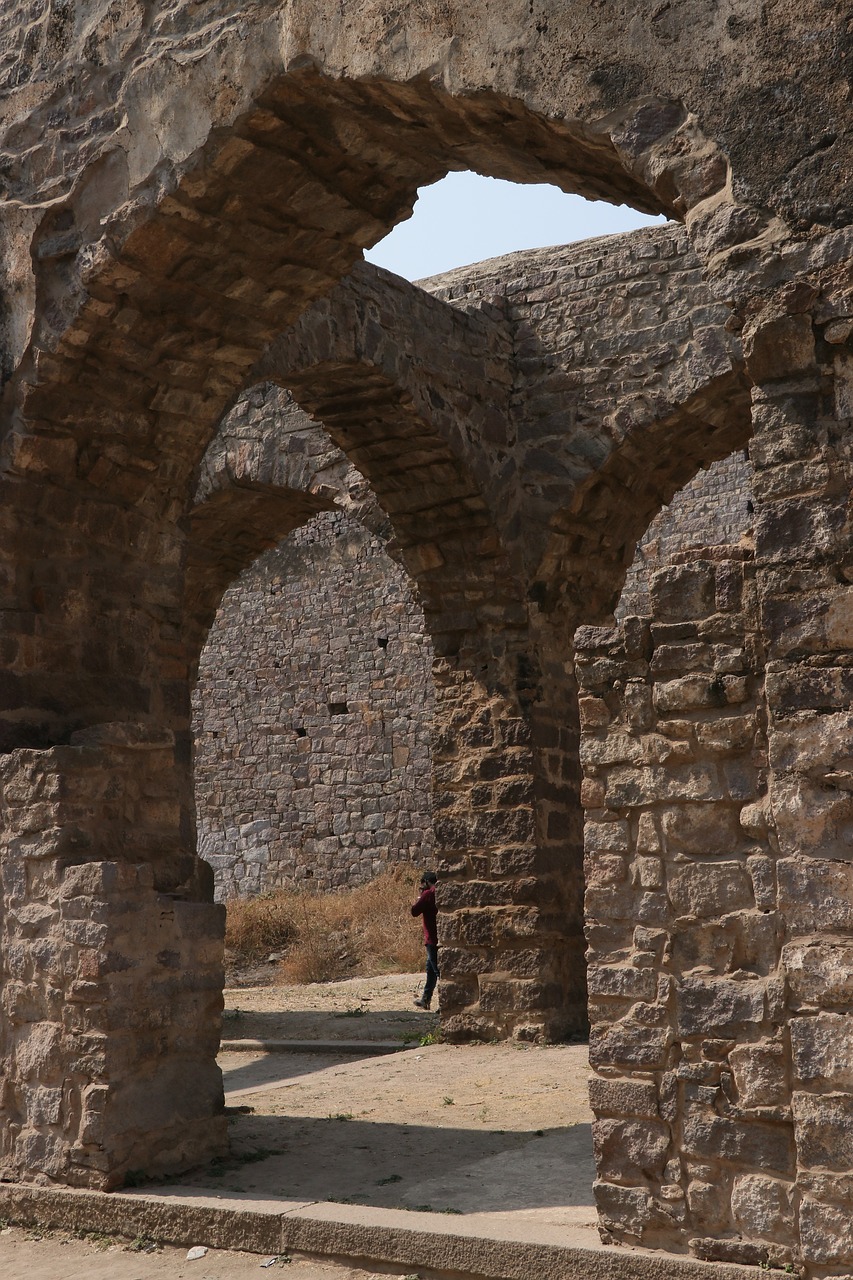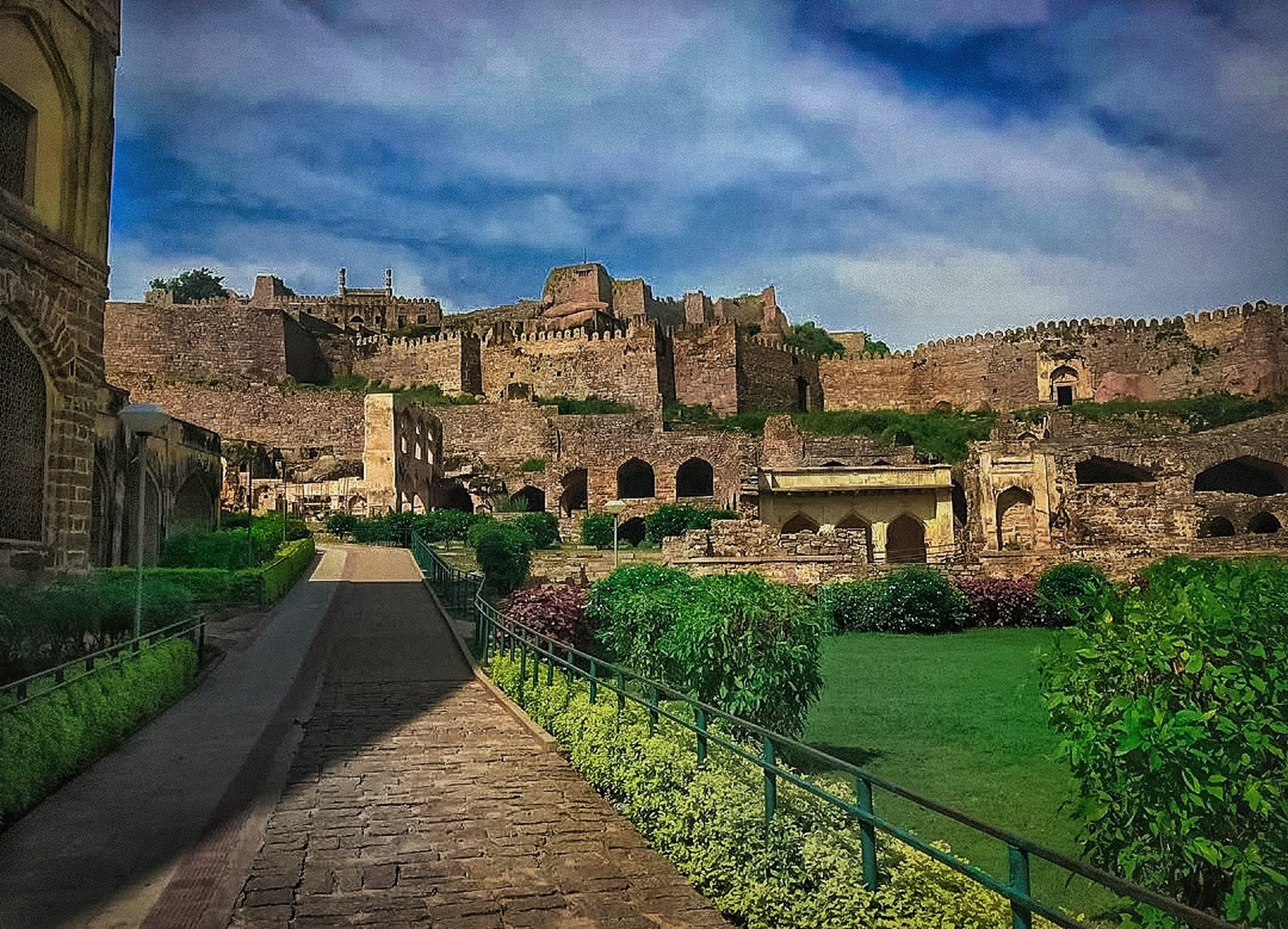Golconda Fort: Perched atop a granite hill overlooking the city of Hyderabad, Golconda Fort stands as a silent sentinel, narrating tales of valor, opulence, and the historical splendor of the Deccan Plateau. This formidable fortress, with its imposing walls and intricate architecture, is a testament to the rich legacy of the Qutb Shahi dynasty. Join us on a journey through time as we explore the grandeur and historical significance of Golconda Fort.
“Step into the majestic past at Golconda Fort, an iconic citadel perched atop a granite hill in Hyderabad, India. This historic fortress boasts a rich heritage, narrating tales of royal splendor and military prowess from the Qutb Shahi dynasty. Explore the impressive architecture, including the renowned Fateh Darwaza, and witness the stunning acoustic wonders of the Fateh Rahben cannon. The panoramic views of Hyderabad from the fort are breathtaking, especially during sunset. Plan your visit to Golconda Fort for a captivating journey through time, where centuries-old walls echo the grandeur of a bygone era.”
Historical Tapestry: Golconda Fort
Built during the reign of the Qutb Shahi rulers in the 16th century, Golconda Fort served as a center of power, trade, and culture. Originally a mud fort, it was later fortified with massive granite walls, transforming it into an impregnable stronghold. The fort’s strategic location facilitated control over diamond mines, turning it into a prosperous center for diamond trade, with Golconda becoming synonymous with some of the world’s most famous diamonds, including the Koh-i-Noor.
Architectural Marvels: Golconda Fort
Golconda Fort’s architecture is a blend of military precision and artistic finesse. The outer fortification, featuring eight gates, was designed to thwart invaders, while the inner citadel housed palaces, mosques, and the majestic Durbar Hall. The acoustic wonders of the fort, such as the famous “clapping hands” phenomenon at the Fateh Darwaza, where a clap at a certain point can be heard at the highest point of the fort, showcase the advanced engineering skills of the time.
The Grandeur Within: Golconda Fort
Once inside the fort, visitors are greeted by the graceful ruins of the Qutb Shahi palaces. The Taramati Baradari, an open pavilion named after a legendary courtesan, offers panoramic views of the city below. The ornate stucco work, delicate carvings, and the ingenious water supply system within the fort reflect the architectural brilliance of the era.
The Fateh Darwaza:
The Fateh Darwaza, or Victory Gate, is an iconic structure that witnessed the triumphs of the Qutb Shahi dynasty. The gate, adorned with spikes to deter elephant attacks, served as a symbol of victory and resilience. It opens to the sprawling outer courtyard, which once hosted grand military parades and royal ceremonies.
Golconda at Night:
As the sun sets, Golconda Fort transforms into a mesmerizing spectacle. The fort is beautifully illuminated, casting an enchanting glow on its weathered walls. The play of light and shadow accentuates the architectural details, creating a magical ambiance that transports visitors to a bygone era.
Preservation and Heritage:
Despite facing the ravages of time, Golconda Fort has undergone extensive restoration efforts to preserve its historical significance. The Archaeological Survey of India has played a crucial role in maintaining the structural integrity of the fort, ensuring that future generations can continue to marvel at its grandeur.

Conclusion:
Golconda Fort stands as more than just a historical monument; it is a living testament to the resilience, artistry, and strategic vision of the Qutb Shahi dynasty. As visitors explore its echoing halls, climb its ancient staircases, and gaze upon the city from its lofty heights, they become a part of the unfolding saga of Golconda—a majestic citadel that continues to echo the grandeur of Hyderabad’s storied past.

